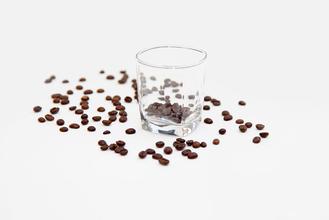El Salvador Coffee Grinding degree Taste characteristics Variety Flavor description Fine Coffee introduction
There are many volcanoes in the territory, with the name of "Volcano Country". The lowest altitude in the territory is 0 meters, and the highest is Santa Ana active volcano 2385 meters.
In 1524 it became a Spanish colony.
1821 Independence from Spain.
In 1824, it joined the Central American Federation, which included Guatemala, Honduras, Nicaragua, Costa Rica, and Mexico.
In 1841, it seceded from the Federation and became independent.
Cafe de El Salvador Cafe de El Salvador
Photo: Flag and Emblem of El Salvador
A brief history of coffee production
Coffee was introduced to El Salvador from the Caribbean in 1742 (1740).
In the mid-19th century, El Salvador's original export pillar Indigo (Indigo, a dye) gradually declined due to the development of synthetic dyes in Europe, and coffee gradually became the main export product under the leadership of the government.
In 1856, the first 693 bags of coffee beans were shipped to Europe. Europe was El Salvador's leading coffee customer until World War II, when it was replaced by the United States.
In the 1970s, El Salvador produced a record 350,000 bags of coffee. As the civil war intensified, the coffee industry was in turmoil.
Coffee production in El Salvador was affected by domestic political instability, and the civil war was suspended after the parties signed a peace agreement in 1992. The coffee industry is beginning to recover.
Coffee production status
"Natural disasters" and "bad luck" are the words that describe the challenges facing El Salvador's coffee industry. Although it has escaped the shadow of war, El Salvador's coffee production still faces challenges from time to time, including: hurricane in 1998; earthquake in 2001; volcanic eruption in 2002; and leaf rust in 2012.
Despite these challenges, El Salvador has maintained a high coffee production, consistently ranking in the top 15 of ICO member countries for total coffee production between 2008 and 2012, according to ICO International Coffee Organization data. In 2013, affected by leaf rust disaster, 70% of farms in China were infected, and the yield dropped sharply by about 40%, ranking down to 16.
El Salvador 08-13 Total coffee production and ranking (unit: 000 bags, 60kg per bag)

Important Notice :
前街咖啡 FrontStreet Coffee has moved to new addredd:
FrontStreet Coffee Address: 315,Donghua East Road,GuangZhou
Tel:020 38364473
- Prev

Fragrant Jamaican Coffee Flavor description, Grinding degree, Taste characteristics, Variety producing area
The unique flavor of Blue Mountain Coffee is related to its unique geographical location and climatic conditions. Blue Mountain is located in the coffee belt between 25 degrees north latitude and 25 degrees south latitude, with fertile new volcanic soil, fresh air, no pollution, rainy all the year round and great temperature difference between day and night. Most importantly, every afternoon, clouds cover the top of the mountain, which not only shades the coffee trees naturally, but also brings abundant
- Next

Introduction to the characteristics of Nicaraguan Coffee Flavor description and Grinding degree treatment
The origin of Nicaraguan coffee: the best Nicaraguan coffee is grown in the north and middle of the country, and the best coffee is produced in Jinotega in Matagalpa and NuevoSegovia in New Segovia. The characteristics of Nicaraguan coffee: the finest Nicaraguan coffee falls into the category of CentralEstrictamenteAl.
Related
- Detailed explanation of Jadeite planting Land in Panamanian Jadeite Manor introduction to the grading system of Jadeite competitive bidding, Red bid, Green bid and Rose Summer
- Story of Coffee planting in Brenka region of Costa Rica Stonehenge Manor anaerobic heavy honey treatment of flavor mouth
- What's on the barrel of Blue Mountain Coffee beans?
- Can American coffee also pull flowers? How to use hot American style to pull out a good-looking pattern?
- Can you make a cold extract with coffee beans? What is the right proportion for cold-extracted coffee formula?
- Indonesian PWN Gold Mandrine Coffee Origin Features Flavor How to Chong? Mandolin coffee is American.
- A brief introduction to the flavor characteristics of Brazilian yellow bourbon coffee beans
- What is the effect of different water quality on the flavor of cold-extracted coffee? What kind of water is best for brewing coffee?
- Why do you think of Rose Summer whenever you mention Panamanian coffee?
- Introduction to the characteristics of authentic blue mountain coffee bean producing areas? What is the CIB Coffee Authority in Jamaica?

